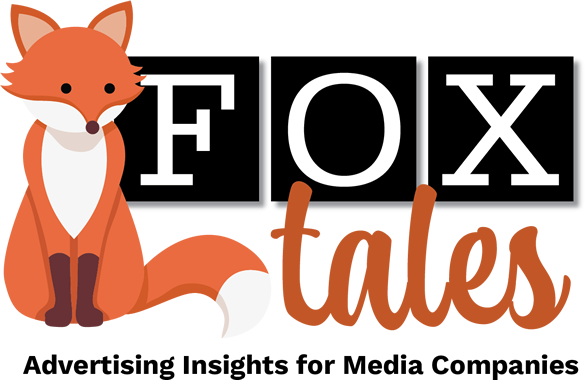As we move into November, the media industry is in the thick of its budgeting and planning for next year. And 2023 is shaping up as a year that may contain some turbulence.
The digital advertising boom has slowed, perhaps even gone backwards. And on a macro level, there’s inflation and other uncertainty. And despite nearly full employment, some economists are predicting a recession may be in the offing.
All this trickles down to the decisions made by individual media brands and the marketers who advertise in those brands.

Bill Bell.
With that context in mind, we asked Fox Associates Senior Vice President and Director of Sales and Business Development Bill Bell what he’s seeing on the front lines of the media business here as we move toward the end of the year. Here, edited for clarity and brevity, is our Q&A with Bill.
Fox Tales: How is the general economy shaping up for 2023, from the perspective of marketers? Is there a sense of uncertainty? Concerns about recession?
Bill Bell: The answer can vary by industry. As a full-service publisher’s representative, representing a number of disparate consumer publishers and associations, we evaluate the effects of the economy through the eyes of our individual publishing partners as well as through the eyes of their advertisers/prospects and sponsors. Content producers have to monitor subscriber and reader trends and gauge the performance of their content across all platforms.
The vitality and impact of each of these platforms must be relayed to marketers so that they may determine the best means to invest resources as they seek to reach their end user. There’s no doubt that association members, trade professionals and even consumers are watching their own funds closely and requiring accountability for how they spend their dollars. There has to be a benefit to making a purchase (often immediately felt), or they may hold on to their money very tightly, regardless of the advertising they see or how it is delivered.
Marketers understand this. They, too, need to ensure that the money they’re investing in media delivers their message to the right audience, via the right channels and at the right times. Whether it’s the end-user, the marketer or the publisher, the smart decision-makers realize they still need to do business—they’re just likely to be more careful, given the economic climate.
Fox Tales: What’s the single biggest advertising trend you’ve seen in 2022?
Bell: The continued move towards accountability in all advertising. What did we spend as marketers and what was the ROI? There’s a need for tangible results in the short-term driving more and more media decisions. There are a growing number of marketers that simply don’t have the resources, or won’t free them, to build their brand concurrent with seeking short-term sales. Again, the smart marketers recognize that without brand equity or a proven, articulated unique-selling proposition, all of the short-term tactics in the world won’t be enough to sustain them over the long-haul.
Fox Tales: Has your business changed in any material way from the days of annual contracts, or is that still what marketers want?
Bell: We are seeing more tactical buying than ever before. A lot of that has to do with the digital solutions that make it possible to turn on a dime and to execute short-fuse initiatives, allowing marketers to react to the environment in which they find themselves. That said, we still have a number of marketers who recognize the value of securing their annual programs early and, thus, receiving better pricing and better positioning as a result. This doesn’t preclude them using tactical tools along the way, but it does ensure that the good pricing they received by booking the bulk of their advertising in advance for the year will be honored.
Fox Tales: How does all of the above affect association publishers in particular?
Bell: Associations have unique challenges—some of which they can overcome and some that are out of their control. The costs of producing, printing and mailing their number-one member benefit (the magazine) is not something they can do much about. Reducing publishing frequency is often the result of dealing with increased costs, but that can have a negative effect on the perceived value of the magazine—giving it the appearance of being old news by the time the member receives an issue. The loss in advertising revenue is not easily made up simply by delivering content though alternative digital channels.
We all have to remember that the marketers (who are the ones investing to generate awareness, leads and sales) may not value the various means of delivering the content for their own product/service messaging.
I mentioned that there are some challenges that associations can overcome. But it requires some imagination and some letting-go of conventional “member protections.” Marketers often have case studies, white papers and webinars/podcasts that members can learn from. Presented in an educational way, such content serves the association, the member and, of course, the marketer. Such content can be presented as an opt-in for members via any number of digital channels.
Associations can generate print-like revenue simply by being a conduit between members and marketers. Their websites can be depositories or libraries for the best of this industry content. Their advertisers and sponsors can be viewed as resources for industry content versus merely supporters of the organization. But first, associations need to be open to such innovation and internal departments need to work more horizontally together rather than vertically and insulated from one another.
Fox Tales: What are the most promising advertising products that media companies are selling these days?
Bell: Any media solution that elevates a brand in the eyes of the potential end-user and can entice response or engagement are readily adopted by marketers. Non-commercial webinars, podcasts, white papers, seminars, case studies or product theaters that demonstrate the USP of a product or service are attractive. While digital platforms are most conducive for these types of solutions, combining those media with print can be most effective. The magazine (monthly, bimonthly or even quarterly) can recap findings or be a digest of all content for that month or quarter, complete with referencing locations where the expanded content can be found.
